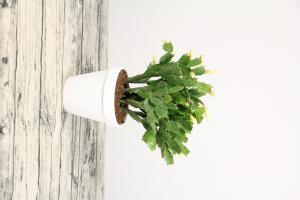Can You Cut Back Overgrown Tomato Plants?
Tomatoes are a popular addition to any garden, and with the right care, they can produce a bountiful crop of delicious fruit. However, if left unchecked, tomato plants can quickly become overgrown and out of control. So, can you cut back overgrown tomato plants? The answer is yes, and in this article, we will discuss everything you need to know about pruning your overgrown tomato plants.
When to Cut Back Overgrown Tomato Plants
The best time to cut back overgrown tomato plants is towards the end of the growing season when the plant has finished flowering and fruiting. This is typically in late summer or early fall. However, if your tomato plant is severely overgrown and is inhibiting its growth or fruiting, you may need to prune it earlier in the season.
How to Prune Overgrown Tomato Plants
Before you begin pruning your overgrown tomato plants, you will need a few tools. These include a pair of clean pruning shears and gloves to protect your hands from scratches and cuts.
Start by removing any yellow or diseased leaves from the plant. Then, look for the oldest and weakest stems and remove them at the point where they meet the main stem. This will allow the plant to put more energy into producing new growth and fruit. Next, look for any stems that are growing in the wrong direction or crossing over other stems, and remove them as well. Finally, prune any top growth that extends beyond the stakes or supports, as this can cause the plant to become top-heavy and fall over.
When pruning tomato plants, it's important to only remove a small amount of growth at a time. This will help to minimize the shock to the plant and ensure that it continues to grow and produce fruit. Remember, the goal of pruning is to promote healthy growth and fruiting, not to remove large sections of the plant.
The Benefits of Cutting Back Overgrown Tomato Plants
Pruning your overgrown tomato plants offers a number of benefits. First, it allows the plant to put more energy into producing new growth and fruit, which can result in a larger yield of healthier, tastier fruit. Additionally, pruning helps to improve air circulation around the plant, which reduces the risk of diseases like powdery mildew and other fungal infections. Finally, cutting back overgrown tomato plants can help to improve the appearance of your garden, making it look neat, tidy, and well-maintained.
Conclusion
If you're struggling with an overgrown tomato plant, don't panic. With a little bit of pruning and care, you can get your plant back on track and producing a bountiful crop of delicious fruit. Remember to prune your plant at the right time of year, use only clean pruning shears, and remove only a small amount of growth at a time. With these tips in mind, you'll be a tomato pruning pro in no time!

 how many times do yo...
how many times do yo... how many planted tre...
how many planted tre... how many pine trees ...
how many pine trees ... how many pecan trees...
how many pecan trees... how many plants comp...
how many plants comp... how many plants can ...
how many plants can ... how many plants and ...
how many plants and ... how many pepper plan...
how many pepper plan...































